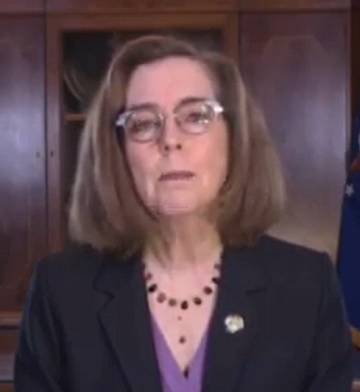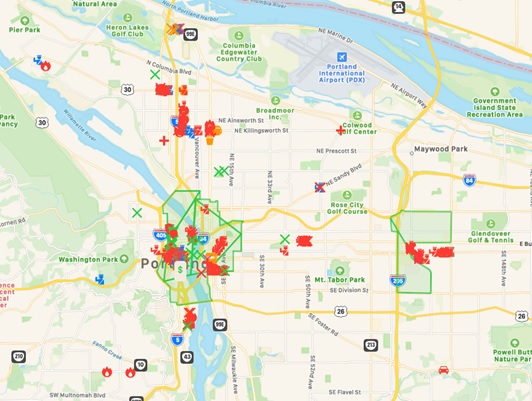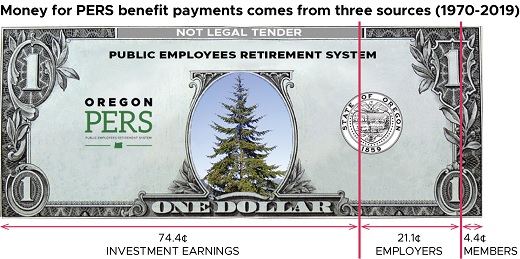 Post an Event
Post an Event
| Benton County Republicans’ Private Fundraising Event, “Bent-on Boots and Bling” with Trey Taylor |
| Friday, September 5, 2025 at 5:00 pm |
| Featuring Trey Taylor
Music Private Event
Friday, September 5, 2025 5:00-5:30 pm VIP Reception
5:30-8:00 pm Heavy Appetizers,
Auction, Concert
Red: $750 VIP Reception
Front Row Table Sponsor
White: $500 Table Sponsor
Blue: $50 per person
Limited Seating. Get Yours Now!!!
Support Local
Dress up: Bling, Cowboy, Patriotic Benton County Republican
FUNDRAISER
www.BentonGOP.org
Get your tickets today at:
https://www.bentongop.org/event-details/benton-county-republicans-fundraiser/form
About Trey:
Trey is the youngest African American Man in Country Music History. The Denver Post wrote
"It's impossible to miss his enthusiasm. With a fondness for cowboy boots, gaudy colors and dazzling jewelry, Trey Taylor could stand toe to toe with any of the Pop, Country or even Rap
contemporaries of his generation.“ |
| Trysting Tree Golf Club, 34028 NE Electric Rd., Corvallis |
Spoiler alert: Food court depends on the county risk level.
Below are answers to frequently asked questions about the Oregon Health Authority’s Sector
Guidance for Retail Stores. The guidance and these FAQs apply statewide. OHA provides these FAQs to help the public understand the guidance, to respond to stakeholder questions, and to clarify how the guidance may apply in specific scenarios. These FAQs may be intermittently updated. The FAQ is not intended to take the place of the guidance, but rather to interpret, supplement and help fill in the details of the guidance.
Operations
Q1: May secondhand stores accept donations?
A1: Yes. When processing returns or donations, employees should wash hands or use hand sanitizer before and after handling items. A retailer may set items aside for a day or longer if concerned about perceived risks of exposure.
Q2: Where do real estate offices fit?
A2: Real estate offices must follow the OHA General Guidance for Employers and Organizations. Real estate offices are not subject to, but may review, the retail guidance for other recommendations that they may want to follow.
Q3: How do I determine the number of customers to allow in a store?
A3: Businesses must limit capacity based on the designated risk level for the county where the store is located. Guidance for determining maximum occupancy and capacity is located in the Sector Risk Level Guidance Chart.
Q4: May farmers markets or other open markets operate under the Retail Guidance?
A4: Yes, farmers markets or indoor and outdoor markets may operate under the Retail Stores guidance and are required to follow the maximum capacity limits based on the designated risk level of the county where the market is located.
Q5: If a customer gets COVID-19 from being in my store, am I liable?
A5: If you have liability concerns you should contact your legal counsel.
Q6: I've noticed many businesses have shorter hours. Is there any requirement that retailers are to be closed by a certain time?
A6: There is not a requirement for retailers to be closed by a certain time or change their hours of operation.
Q7: Are museums required to follow the Sector Guidance for Retail Stores? What is the guidance for museums?
A7: Museums are considered indoor entertainment and are required to follow the Sector Guidance for Indoor Entertainment Establishments.
Q10: Are u-pick/u-cut operations, like tree farms, allowed?
A10: Yes. These are allowed following the Sector Guidance for Retail. For more information about U-Pick Farms, refer to the Oregon Department of Agriculture’s U-Pick Farms information.
Q11: Can holiday bazaars operate under the Retail Guidance?
A11: Yes. Holiday bazaars may operate under the Retail Guidance. Holiday Bazaars are generally considered an outdoor or indoor market and are subject to the additional requirements in the Retail Guidance.
Q12: Are banks and credit unions allowed to operate under the Retail Guidance?
A12: Yes, banks and credit unions must comply with the retail guidance.
Employees
Q1: Are retail businesses required or recommended to conduct health care screening for employees? What about self-health monitoring for employees instead?
A1: It is recommended that retail businesses consider regular health checks (e.g., temperature and respiratory symptom screening) or symptom self-report of employees, if job-related and consistent with business necessity, and in accordance with human resources policies.
Q2: May I take the temperature of my employees?
A2: Following OHA guidance, retail businesses may consider regular health checks (e.g., temperature and respiratory symptom screening) or symptom self-report of employees if job-related and consistent with business necessity and in accordance with human resources policies.
Q3: If our retail business decides to check the temperature of our employees, is there a specific thermometer to use that is less invasive?
A3: Yes, it is recommended to use an infrared no-touch thermometer.
Q4: If a retail facility has employees who can maintain physical distancing, do we still have to require them to wear masks?
A4: Yes, a retail facility must require employees, contractors and volunteers to wear a mask, face shield or face covering following the Statewide Mask, Face Covering, Face Shield Guidance. Employees must also maintain at least six feet of physical distance from others.
Q5: Is the face covering requirement for customer-facing employees only, or also for employees who don't interact with the customers (e.g., warehouse employees)?
A5: It applies to both. The Statewide Mask, Face Covering, Face Shield Guidance requires all employees, contractors and volunteers to wear a mask, face shield or face covering.
Q6: For retail stores that have not closed or are not listed as required to close based on the designated risk level for the county, are face coverings required for those employees?
A6: Yes. All retailers, including grocery and pharmacy stores, must comply with the Guidance for Retail Stores and the Statewide Mask, Face Covering, Face Shield Guidance
Shopping Centers and Malls
Below are answers to frequently asked questions about the Oregon Health Authority’s Sector Guidance for Indoor and Outdoor Shopping Centers and Malls. The guidance and these FAQs apply statewide. OHA provides these FAQs to help the public understand the guidance, to respond to stakeholder questions, and to clarify how the guidance may apply in specific scenarios. These FAQs may be intermittently updated. The FAQ is not intended to take the place of the guidance, but rather to interpret, supplement and help fill in the details of the guidance.
Q1: Can shopping centers and malls open during the extreme risk level?
A1: Yes. Shopping centers and malls may operate during the extreme risk level and must follow the capacity requirements listed in the Sector Risk Level Guidance Chart.
Q2: If a food establishment is located at a mall or shopping center, may it provide curbside, take out service for food?
A2: Yes. Establishments located at a mall or shopping center are required to follow the Sector Guidance for Eating and Drinking Establishments and may offer food or drink for off-premises consumption (e.g., take out) or for delivery. All on-site consumption in restaurants and food courts is based on the designated risk level of the county where the eating and drinking establishment is located.
--Staff Reports| Post Date: 2020-12-16 07:12:02 | Last Update: 2020-12-15 20:56:53 |
Unlawfully obtained and used drugs before wrecking patrol car
On November 27, 2020, at approximately 3:58 P.M., Oregon State Police Troopers were dispatched to a multiple vehicle crash at the intersection of South 6th Street and Crater Lake Parkway in Klamath Falls. The driver that caused the crash, later identified as, Thomas Dwayne Reif (27) was driving a silver 2013 Dodge Avenger.
Reif, a detective with the Klamath Falls Police Department, was on duty at the time of the crash and was driving his assigned Detective vehicle.
Just prior to the crash, Klamath County 911 received a call describing Reif as driving recklessly down South 6th Street.
Reif was evaluated at the scene by Klamath County Fire District 1 personnel and found to be unresponsive and not breathing. He was transported to Sky Lake Medical Center where emergency department personnel were able to quickly stabilize him.
The Klamath Falls Police Department immediately requested the Oregon State Police take lead on the investigation. Troopers began a DUII investigation and collected evidence the night of the crash. Evidence was sent to the Oregon State Police Crime Lab as part of the investigation. Members of the Oregon State Police Criminal Investigation Division were brought in to work with the Patrol Division on the investigation.
While evaluating the evidence seized in the investigation, Troopers developed probable cause that Reif had unlawfully obtained and used drug evidence from an unrelated case in the course of his duties.
Once lab results were obtained on the evidence, Troopers sought to arrest Reif for DUII, Reckless Driving, Recklessly Endangering Another Person, Official Misconduct 1st degree, Tampering with Evidence, and Unlawful Possession of a Controlled Substance (Schedule II controlled substance – fentanyl)
Thomas Dwayne Reif was booked into the Klamath County Jail on December 15, 2020.
The Klamath Falls Police Department has released
a statement on the situation.
--Ben Fisher| Post Date: 2020-12-15 19:53:32 | Last Update: 2020-12-15 20:12:02 |
Interest grows over who gets what place in line -- and who must get in line
Governor Kate Brown will hold a press availability tomorrow, when Oregon hospitals are scheduled to begin administering the first COVID-19 vaccinations in the state to frontline health care workers. She will be joined by representatives from the Oregon Health Authority and Oregon hospitals, including Legacy Health, Oregon Health & Science University, and Saint Alphonsus in Ontario.
Governor Brown will hold a press conference tomorrow, December 16, at 11:00 am. A livestream will be
available for the public.
According to the Oregon Health Authority
website, this event is the beginning of what will be a massive immunization campaign as health facilities begin receiving new Pfizer-BioNTech vaccine. The first COVID-19 vaccine doses arrived in Oregon yesterday, December 14. Legacy Health is the first registered COVID-19 vaccine provider in the state to receive the vaccine, made by Pfizer Inc. and BioNTech SE. The health system’s Holladay Park site in Portland and Meridian Park site in Tualatin each took delivery of one package of 975 doses today at around 7:00 am.
Additional doses are expected at three other locations in Oregon on Tuesday: Oregon Health & Science University Pharmacy, Kaiser Permanente’s Airport Way Center in Portland, and St. Alphonsus Medical Center in Ontario also are each expected to receive 975-dose packages of the Pfizer-BioNTech vaccine. The remaining 30,225 Pfizer vaccine doses from this week’s allocation of 35,100 dose for Oregon will arrive at hospitals throughout the rest of the week, with 10,725 doses going to skilled nursing facilities for vaccinations that start next week.
--Staff Reports| Post Date: 2020-12-15 18:28:23 | Last Update: 2020-12-15 19:38:04 |
Planet Earth still has lots of ice and snow
Why is that great news? Because it is not coming to Oregon. Our chances for snow in the Willamette Valley are low until after the first of the year. However, if you want snow, all you need to do is look at the nearby hills that are covered. Still more snow is available on Mt. Hood.
Some are worried about the Arctic melting. They should be worried about the coming snow and ice. For reference, Resolute, Nunavut Canada in the high Arctic is presently -15 F with a stiff wind that makes it feel like -45 F, AND it is completely dark 24 hours per day this time of year. Resolute is about the most northern settlement on Earth that is a real town, not just a military or weather station.
If anyone is worried about the sea ice, here is the latest from the Arctic. The Arctic ocean is completely covered with sea ice, but slightly less than normal for this time of year. The temperature at Summit Camp high on the Greenland ice cap is about -22 F. That is considerably warmer than it was a few days ago, when the temperature dipped to -60 F. The ice cap is still shedding icebergs into the North Atlantic at these temperatures, because that process is largely unrelated to the outside temperature.
The Antarctic is losing sea ice fast but slightly 'above normal' as their summer approaches. The temperature at Vostok, Antarctica is presently a relatively mild -22 F. Nevertheless, there is no melting at those temperatures.
In other words, planet Earth still has lots of ice and snow. Those on the East Coast USA may soon feel that they have more than their fair share.
Santa is definitely shivering at the North Pole. Merry Christmas to all.
--Gordon Fulks, Ph.D.| Post Date: 2020-12-15 16:11:16 | Last Update: 2020-12-15 16:21:32 |
Drazan: This special session is an opportunity for us to come together
Three bill drafts are out for the
upcoming special legislative session, announced earlier today by Governor Kate Brown. It is not expected that any other legislation will be considered.
- LC 10 provides some regulations on the restaurant industry.
- Allows "to go" sales of liquor.
- Caps delivery charges at 10% of the price of the meal.
- LC 18 attempts to address the growing secondary crisis caused by the eviction moratorium.
- Distributes money to landlords to pay rents that have been unpaid from tenants.
- Extends the eviction moratorium until the end of June.
- LC 21 limits legal liability for public schools and colleges -- but not private schools -- from claims arising from COVID-19 related causes.
Persons wishing to provide testimony on these bills can do so on the
Oregon Legislative Information Website. The session will be closed to the public -- at least in person.
Republican Legislative leaders sounded off on the upcoming special session -- each leader articulated a strong vision for the session.
“The third special session will give needed relief to hurting Oregonians. Proposed legislation includes COVID-19 liability protections for schools, a critical first step to get schools reopened, support for renters and landlords, as well as technical changes in the restaurant industry that will help hard-working Oregonians and small businesses.
“There is significant work to be done in the upcoming 2021 long session, and Republicans will continue to advocate for liability protections for our health care system in the coming weeks.†said Senate Republican Leader Fred Girod (R-Lyons) in a statement.

House Republican Leader Christine Drazan (R-Canby) also released a statement, saying that “A third special session will provide needed relief for Oregonians who have been impacted by COVID-19 and the governor’s executive orders. Proposed legislation prioritizes families and kids, restores jobs and takes our first steps to prevent frivolous lawsuits, while setting aside resources to balance our budget, fund wildfire recovery and support public health.
This special session is an opportunity for us to come together to support Oregonians. Our work remains incomplete until we successfully provide access to COVID-19 vaccines to Oregonians who want it, get our students back in the classroom, provide critical liability protections for businesses and our essential health care system, rebuild communities impacted by wildfires and recover jobs."
--Staff Reports| Post Date: 2020-12-15 08:43:35 | Last Update: 2020-12-16 09:50:27 |
This will be a regular special session, not a catastrophic
Governor Kate Brown will convene a Special Session of the Oregon Legislature at 8:00am Monday, December 21, 2020, to address Oregonians’ most pressing needs given the ongoing COVID-19 pandemic, which have only been compounded by Oregon’s horrific wildfires. The Governor is asking the legislature to consider both critical policies and $800 million in relief to support Oregonians during a one-day special session on COVID-19 and wildfires.
“Oregonians are making tremendous sacrifices to prevent the spread of COVID-19,†said Governor Brown. “While the risk reduction measures we have put in place are working to slow the spread, many Oregon families are struggling with unemployment, housing, food insecurity, and paying their bills — and those most impacted are the same people who are often left behind, including rural, Black, Indigenous, Latino/Latina/Latinx, Asian, Pacific Islander, and Tribal communities.
“I continue to call on Congress to pass another robust coronavirus relief bill to bring support to the American people. But these calls have not yet been heeded. It is clear that states must act on their own to provide a bridge until federal help arrives. This is why I am calling on legislators from both sides of the aisle to come together in the best interests of the state.
“We must protect Oregonians now, as we face some of our hardest days, whether by getting critical resources into the hands of those most in need, keeping a roof over people’s heads, or recognizing the incredible toll of this virus on our small businesses and restaurants. Oregon must act to bridge the gap as we continue to wait to see federal relief. I thank legislators for their work in addressing these critical issues next week, and I look forward to our progress.â€
Republicans are calling for supports for businesses, schools and the health care system.
Included in the Governor’s budget priorities is aid for tenants and landlords, funding for vaccine distribution and contact tracing, wildfire prevention and community preparedness, and support for reopening schools.
To help ensure a healthy and safe environment for conducting session, legislative officials are consulting the state epidemiologist, Dr. Dean Sidelinger.
--Staff Reports| Post Date: 2020-12-15 07:39:17 | Last Update: 2020-12-15 08:43:35 |
Long-term future is unknown
Despite a government-lockdown-driven COVID recession, Oregon's Treasurer is projecting strong general fund and lottery revenues over the next nine-year period. It's not known how dependent these revenue projections are on the influx of federal money. According to the
report from the State Debt Policy Advisory Commission, the December revenue forecast permits the issuance of $1.139 billion general fund backed debt in 2019-21 biennium.
Oregon Treasurer Tobias Read said in a
letter to Governor Brown and the Legislature, "In addition to the human costs, the pandemic has dramatically affected our economy, leading to financial uncertainty and commensurate challenges to the State’s budget in both the current and upcoming biennia. This makes long-term funding plans more difficult for important State and local government capital projects."
The debt capacity has a target of using 5% or less of state revenue to do debt service, and at that rate, the state will be able to issue over a billion dollars in debt during the next biennium.
Treasurer Read points out the uncertainty in the economy as well as the uncertainty of federal aid. "For these reasons, we continue to advise caution and patience when planning for capital projects," Read added.
--Staff Reports| Post Date: 2020-12-14 21:18:19 | Last Update: 2020-12-14 22:09:40 |
Western governors say it’s OK to take the vaccine
Oregon, Washington and Nevada joined California’s COVID-19 Scientific Safety Review Workgroup in October, which has worked concurrently and independently to review the FDA’s actions related to COVID-19 vaccinations. The Workgroup completed their concurrent and thorough review of the federal process and has confirmed the Pfizer COVID-19 vaccine is safe and effective. The Workgroup panel is made up of nationally acclaimed scientists with expertise in immunization and public health. It has been pointed out that the workgroup is more political than scientific -- a way for governors of blue states to show their distrust of the Trump administration.
“With recommendations from the FDA, CDC, and, now, the Western States Scientific Safety Review Workgroup, Oregonians can rest assured that some of the best doctors, scientists, and immunologists in the world have reviewed the data and affirmed that the Pfizer-BioNTech vaccine is safe and effective,†said Governor Kate Brown. “We will work as quickly as possible to deliver vaccines to the public, starting with frontline health care workers and those who have been hardest hit by COVID-19. Please keep doing your part to keep your family and loved ones safe—wear a mask, stay home when you are sick, and avoid gatherings. Together, we can do this. Hope is on the way.â€
With a 95% effective rate for the vaccine and a 99.9% survival rate, the public has a choice.

There is a lot of concern regarding the content of the vaccine. Both Pfizer and Moderna vaccines use synthetic ingredients (mRNA) that contains information about the coronavirus’s signature spike protein. It is not a proven technology, but said not to alter human DNA in any way. Still, with all this extra review, the public still does not know the full content of the vaccine.
MIT Technology Review asked experts. There are the obvious ingredients, but concluded that Pfizer is holding back a little. “The spike gene sequence can be tweaked in small ways for better performance, by means that include swapping letters. We don’t think Pfizer has said exactly what sequence it is using, or what modified nucleosides. That means the content of the shot may not be 100% public.†At the end of the day, Pfizer flat-out says, “no microchips.â€
So what should we expect? CDC website states in its COVID-19 information page that they don’t know how long immunity will last from a vaccine. “It’s conceivable that the vaccines provide long-lasting protection, or fade away in under a year and require a booster.â€
The Pfizer vaccine should be a choice, but is this announcement more to do with a catastrophic disaster special session to put its mark on every Oregonian?
--Donna Bleiler| Post Date: 2020-12-14 08:38:31 | Last Update: 2020-12-14 22:15:52 |
Riot damage seems to track opportunity zones
In the aftermath of the violence this summer, the city of Minneapolis mapped out the redevelopment business opportunity zones and overlaid the buildings burnt out by Antifa. They were shocked that it matched perfectly. Some wanted to know how many Antifa and Black Lives Matter agents are deep state provocateurs. To some observers, it was clear to them that they were hired to tear down America.
According to Wikipedia,
Catherine Austin Fitts is an American investment banker and former public official who served as United States Assistant Secretary of Housing and Urban Development for Housing during the Presidency of George H.W. Bush. She has widely written and commented on the subject of public spending and has alleged several large scale instances of government fraud. She founded an investment advisory firm named Solari, which also produces a blog analyzing public policy.
Motivated, the
Solari Team mapped Portland from May to October 7, 2020, for the correlation between riot damage and the tax-attractive Opportunity Zones. They found that “a tremendous amount of effort was spent on destroying the downtown area bounded on the West: by the 405, North: by West Burnside, East: Willamette River and South: SW Clay where a high concentration of Justice and Police facilities were.â€
Even though riots happened repeatedly in the same areas in Portland, the damage was very devastating. The majority of the riot damage was in Opportunity Zones, however, there was stray violent areas outside of opportunity zones. Most of that damage was targeted at law enforcement structures, coordinated with defund police protests. Small Business property damage was rampant costing businesses $30 million, which doesn’t include the destruction to city property, cleaning graffiti off monuments and buildings, and replacing or restoring monuments.
Governor Brown’s order to keep businesses shutdown only makes it more difficult for destroyed businesses to be rebuilt, unless they aren’t intended too. Portland’s economic development agency intends to deliver on its promise of equitable development made in 2013. The city plans for the Central Commercial Zone between Old Town Chinatown and the Pearl District will include at least 720 affordable housing units, small business opportunities, new parks, public art and a cycle track within the neighborhood. What other plans are on the drawing board that will utilize the destroyed businesses?
--Donna Bleiler| Post Date: 2020-12-13 21:26:24 | Last Update: 2020-12-13 21:40:38 |
Treated at hospital for hypothermia
On December 12, 2020 an officer from the Portland North Precinct was in the area of Northeast Cornfoot Road and Northeast Alderwood Road when he observed a green 1997 Subaru Legacy parked in a westbound lane facing eastbound. The officer ran the plate and learned the vehicle was stolen.
The officer attempted to stop the vehicle at which point the vehicle accelerated. For the safety of the public, the officer did not attempt to pursue or catch up to the vehicle.
An officer from another agency advised dispatch he observed the vehicle driving northbound in the southbound lanes on Northeast 82nd Ave through the Northeast Alderwood Road intersection toward Northeast Airport way, running the red light.
The Portland Police Bureau Air Support Unit located the vehicle traveling eastbound on Northeast Airport Way at speeds as high as 100 MPH, while surfing through traffic and not being pursued by police vehicles. The vehicle then drove onto a pedestrian/bike path leading from Northeast Airport Way to Northeast Marine Drive. The vehicle drove down a gravel road near the riverbank and stopped. The Police Air Support Unit reported seeing a subject exit the vehicle and begin to unload it. As patrol cars arrived in the area the suspect fled on foot.
The suspect ran toward the riverbank and entered the water (outdoor temperature was 42 degrees with 10 to 15 MPH winds). The suspect attempted to swim toward the middle of the river. Officers contacted the suspect who eventually exited the water and was placed in custody.
The suspect was identified as 23 year-old Trevon Wade Gilliand. It was determined Gilliand would need to be treated at a hospital for possible hypothermia. Gilliand was issued a citation for Unlawful Use of a Motor Vehicle, Attempt to Elude, and Reckless Driving.
--Ben Fisher| Post Date: 2020-12-13 15:33:28 | Last Update: 2020-12-13 17:34:23 |
Expanding fraud control
Expanding permissible uses of amounts in the Oregon Employment Department Special Fraud Control Fund will be looked in Oregon's third legislative session, if it happens. The bill that would take on this issue would be a bill proposed for the Oregon Legislature in the form of
Legislative Concept 24 and it would also include legislation concerning the payment of the costs associated with the federal Lost Wages Assistance program.
This bill would provide for methods of collection from debtor of reimbursements to Federal Emergency Management Agency for benefit over-payments required under the Lost Wages Assistance program.
LC24 provides the following details:
- The Emergency Clause would be used in this legislation, as it often is in Oregon.
- Over-payments collected from the debtor by the department shall be deposited in the Employment Department Special Fraud Control Fund.
- All amounts in the Employment Department Special Fraud Control Fund are to be used for administrative costs associated with the prevention, discovery and collection of unemployment benefit over-payments shall be used for the following purposes, as included in the biennial budget of the Employment Department and approved by the Legislative Assembly.
- The Director of the Employment Department may waive collection of such over-payments if the director determines that it is administratively impracticable to pursue collection.
--Ben Fisher| Post Date: 2020-12-13 14:28:32 | Last Update: 2020-12-13 19:31:13 |
This study doesn’t account for the unfunded liability
Oregon’s Public Employees Retirement System released its
study findings on retiree benefits paid in 2019. PERS covers approximately 95% of public workers in Oregon including all state and school district employees and most local government employees.
The study analyzed how PERS benefits paid to Oregon retirees impacts Oregon’s economy. Oregon PERS paid approximately $4.11 billion in benefits to PERS retirees living in Oregon in 2019. The $4.11 billion in annual benefit payments multiply to $4.33 billion in economic value to Oregon when the full financial impact of these dollars when spent in local communities. These benefit payments sustained an estimated 33,402 local jobs, and added approximately $1.29 billion in wages to Oregon’s economy. Additionally, the state of Oregon collected an estimated $234.9 million in income taxes on PERS retiree benefits during 2019.
Funding for these benefits came mostly from investment earnings on contributions previously paid by members and public employers. Investment income has provided 74.4% of total pension revenues since 1970. Member contributions have accounted for 4.4%, with employer contributions providing 21.1% of pension revenues over the past 49 years.
These retirees spent a significant portion of this money on goods and services in Oregon, which helped support local businesses. These businesses then purchased goods, in part, from other local vendors, adding to the Oregon workforce and economy. This study quantifies the total effect of these benefit payments on Oregon’s economy, based on three factors:
- Economic value of PERS benefits to Oregon
- Jobs created and related wages
- Tax receipts
Depending on who you ask, the PERS deficit is between $26 to $50 billion that is needed over the next couple of decades to pay pensions. The issue is that the employer contributions are going towards current benefit payments and not reserves. Increase in Investment earnings reduces the obligation.
Investments earnings increased in 2019 by $6,981 million, which was more than enough to cover increased payments, and 2020 is on track to do the same.
--Donna Bleiler| Post Date: 2020-12-12 20:59:41 | Last Update: 2020-12-12 22:38:11 |
Read More Articles











 House Republican Leader Christine Drazan (R-Canby) also released a statement, saying that “A third special session will provide needed relief for Oregonians who have been impacted by COVID-19 and the governor’s executive orders. Proposed legislation prioritizes families and kids, restores jobs and takes our first steps to prevent frivolous lawsuits, while setting aside resources to balance our budget, fund wildfire recovery and support public health.
House Republican Leader Christine Drazan (R-Canby) also released a statement, saying that “A third special session will provide needed relief for Oregonians who have been impacted by COVID-19 and the governor’s executive orders. Proposed legislation prioritizes families and kids, restores jobs and takes our first steps to prevent frivolous lawsuits, while setting aside resources to balance our budget, fund wildfire recovery and support public health.



 There is a lot of concern regarding the content of the vaccine. Both Pfizer and Moderna vaccines use synthetic ingredients (mRNA) that contains information about the coronavirus’s signature spike protein. It is not a proven technology, but said not to alter human DNA in any way. Still, with all this extra review, the public still does not know the full content of the vaccine. MIT Technology Review asked experts. There are the obvious ingredients, but concluded that Pfizer is holding back a little. “The spike gene sequence can be tweaked in small ways for better performance, by means that include swapping letters. We don’t think Pfizer has said exactly what sequence it is using, or what modified nucleosides. That means the content of the shot may not be 100% public.†At the end of the day, Pfizer flat-out says, “no microchips.â€
There is a lot of concern regarding the content of the vaccine. Both Pfizer and Moderna vaccines use synthetic ingredients (mRNA) that contains information about the coronavirus’s signature spike protein. It is not a proven technology, but said not to alter human DNA in any way. Still, with all this extra review, the public still does not know the full content of the vaccine. MIT Technology Review asked experts. There are the obvious ingredients, but concluded that Pfizer is holding back a little. “The spike gene sequence can be tweaked in small ways for better performance, by means that include swapping letters. We don’t think Pfizer has said exactly what sequence it is using, or what modified nucleosides. That means the content of the shot may not be 100% public.†At the end of the day, Pfizer flat-out says, “no microchips.â€



